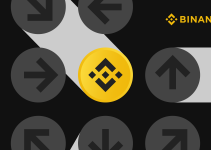Table of Contents

Welcome to the fifth and final part our series on Decentralized AI. So far, we have learned what decentralized AI is and how BNB Chain is providing the ideal platform for it. In this article, let’s look ahead and see how decentralized AI will evolve in the future.
Before we begin, you may want to check out the previous instalments of this series:
- Decentralized AI Powered by Web3: Part One
- Decentralized AI Powered by Web3: Part Two
- BNB Chain’s Solution for AI Infrastructure
- Decentralized AI Solutions Powered By BNB Greenfield and opBNB
Based on all that we have discussed, let’s update our AI formula:
- Data storage and ownership: The data-related work is primarily focused on data storage and ownership. This can be effectively handled by the combination of BSC and BNB Greenfield.
- Computation execution: The computation-related work is centered on execution. This can be efficiently managed by BSC in conjunction with opBNB.
- Algorithm: The algorithm-related work typically necessitates data and model access, in addition to algorithm execution. All three main chains in the BNB Chain ecosystem can seamlessly address these requirements.
While the BNB Chain ecosystem provides a Web3 infrastructure system that has the potential to address the fundamental requirements of AI, there are still some technical challenges that must be addressed to fully realize its potential.
Below we address how the BNB Chain ecosystem could help solve these main challenges.
AI Combination of Computation and Data
Integrating general-purpose computing into the Web3 world poses significant challenges. Web3 smart contracts primarily focus on monetization, while AI tackles a broad range of general-purpose problems. This difference creates hurdles in combining Web3 with AI’s full range of computations.
Current Web3 solutions for AI tend to address data and computation resource challenges separately, often employing distinct blockchains for decentralized data management and computation resource management. While the “divide and conquer” approach is frequently used in problem-solving, a significant portion of AI applications demand a tight coupling of data and computation, particularly in the context of modern reinforcement learning algorithms.
Moreover, in the AI field, the “divide and conquer” pattern often manifests as subset computation, where data and computation are intrinsically linked but compartmentalized into subtasks of computation. For instance, neural networks are inspired by the structure and function of the human brain. They consist of interconnected layers of neurons, which process and transmit information in a distributed manner. This distributed architecture allows neural networks to perform complex computations by dividing the task into smaller, manageable subtasks.
Last but not least, in Web3 AI systems, separating computation and data often necessitates moving data, which can be hindered by network and memory bandwidth constraints.
The BNB Chain’s “Greenfield Executable” project aims to tackle these issues. It enables in-place execution, addressing two major problems:
- Data operation and storage on the same platform: By keeping data and computation in the same platform, the Greenfield executable project provides the possibility to eliminate the need for data movement between storage and computation nodes. This significantly reduces latency and improves the overall performance of AI applications.
- General-purpose computing: This feature enables the execution of a wider range of AI algorithms and models directly on the blockchain. This expands the capabilities of Web3 AI systems and opens up new possibilities for AI applications.
Additionally, leveraging Greenfield’s ownership and permission system, along with BNB Chain’s monetization features, the Greenfield executable could become a comprehensive platform offering:
- Computation resource market: Users can rent or buy computational power from others, democratizing access and simplifying AI application development.
- Data processing market: Users can trade data processing services. This would enable data transformer providers to monetize their data operations and make it easier for businesses to access and process the data they need.
- In-place training: Users can train models directly on the platform without the cost of data movement, reducing training time and enhancing model development efficiency.
- In-place inferencing and model market: Users can run AI models directly on the platform, making them more accessible. A decentralized model market for buying and selling pre-trained AI models could also be established.
Greenfield executable workflow
The Greenfield executable project, currently in development, holds promise for transforming Web3 AI systems. It targets key issues like data movement and general-purpose computing. Its core feature, in-place execution, could lead to more efficient, powerful, and secure AI applications. The project is gaining technical attention in the community, indicating its potential impact.
Performance Optimizations
The increasing complexity and volume of AI and Web3 applications demand significant performance optimizations from BNB Chain. To effectively address this growing demand, BNB Chain’s L1 and L2 platforms are undergoing continuous optimization and enhancement.
A notable example is the Parallel EVM (Ethereum Virtual Machine) initiative within BNB Chain’s roadmap. This initiative aims to accelerate smart contract execution performance for both BNB Smart Chain (BSC) and opBNB. By parallelizing transaction execution, it promises to significantly improve transaction throughput and reduce latency.
Another promising development is the “State Expiry” mechanism, currently under development to address the issue of state bloat. State bloat occurs as the blockchain accumulates historical data, leading to increased storage requirements and slower transaction processing. State expiry aims to manage this data growth by intelligently expiring outdated or unnecessary state information.
BNB Chain’s continuous work on improving its L1 and L2 platforms shows a strong dedication to overcoming performance issues caused by the increasing need to monetize blockchain activities. These innovative measures could establish BNB Chain as a top choice for fostering a thriving AI and Web3 ecosystem.
More on the Wishlist
The enhancements on BNB Chain, including those in BSC, opBNB, and Greenfield platforms, represent just a part of the community’s broader strategy. This commitment to ongoing development is clear from their extensive list of planned initiatives. These initiatives aim to improve security, functionality, reliability, and performance, catering to the diverse requirements of the expanding AI and Web3 ecosystem.
Conclusion
The merging of AI and Web3 offers great promise in reshaping the digital world, tackling AI’s current issues with data privacy, transparency, and fairness. BNB Chain’s multi-chain approach and its community’s active involvement are key in smoothly integrating AI into the Web3 ecosystem.
As both AI and Web3 develop further, groundbreaking innovations are anticipated, potentially redefining the internet’s future and enabling people to utilize AI in a decentralized and fair way.

